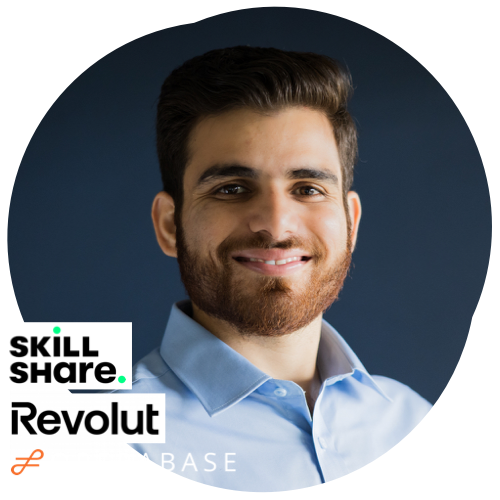4x Users in Just One Year With Machine Learning
Retention isn’t just a metric, it’s the engine of sustainable growth. At Operabase, Aayur Kaul and his team rebuilt that engine from the ground up. By stripping assumptions, applying first-principles thinking, and embedding machine learning into the user journey, they unlocked a transformation: 3x growth in returning traffic and 4x daily active users within a year.This case study goes beyond theory to show the concrete product strategies, experiments, and data-driven decisions that powered the turnaround — and how you can apply the same principles to your own platform.
Rewatch the Keynote
Want to join the next just product conference to see keynotes like this live onsite or in the livestream?
Make sure to get your ticket today
How First Principles and Machine Learning Helped Operabase 4x Its Users
When teams struggle with growth, the instinct is often to add more features, launch campaigns, or tweak the funnel. But what if the real problem lies much deeper—at the level of assumptions?
In his talk at Just Product 2025, Aayur Kaul shared how a first-principles approach helped him and his team at Operabase rethink retention from the ground up. By breaking problems into their fundamental truths, and only then applying AI and machine learning, they managed to triple returning users and quadruple daily active users within a single year—without increasing marketing spend.
Start With Why: The Power of First-Principles Thinking
Aayur opened by connecting his talk to Radhika Dutt’s “Jedi mindset.” While Radhika spoke about intent and learning, Aayur zoomed in on the missing link in between: understanding why something is happening.
He described first-principles thinking as “breaking down complex problems into fundamental truths.” Instead of copying playbooks or repeating what worked elsewhere, you go deeper—asking why again and again until you reach the core of the problem.
He illustrated this with examples of failed products that ignored the “why”: Amazon’s Fire Phone, Apple’s early tablet, and the Tata Nano car. All of them were technologically sound but disconnected from customer needs. The lesson: before asking how to solve, you must understand why it matters and for whom.
Defining the Right Problem
When Aayur joined Operabase in early 2024, the platform had around 150 000 monthly users. Yet only 8 to 9 percent came back regularly.Operabase is often called the IMDB of performing arts—a global database for opera, ballet, and classical productions. It serves three main audiences:
- Viewers, who attend performances.
- Artists, who want visibility and recognition.
- Organizations, such as opera houses looking to cast performers.
Faced with stagnant retention, Aayur’s first-principles question was: Which of these groups gives us the biggest opportunity to move the needle?
The answer was clear—the audience segment. Artists and organizations were smaller groups, but millions of potential viewers could be inspired to return. The challenge became: Why would audience members come back?
Turning Insights Into Experiments
The team listed hypotheses. Viewers might return to see where their favorite artist was performing next, to check local events, or simply for inspiration when bored. Each hypothesis became an experiment.
But experimentation didn’t mean expensive campaigns. Instead, Aayur emphasized extreme, low-cost experimentation—running many small tests to learn fast.
The team improved onboarding to reduce cognitive load, guided users more clearly, and started testing different homepage versions. They compared results city by city—Berlin, Munich, London—tracking click-through rates and time spent on site.
Where Machine Learning Made the Difference
Once the foundations were clear, technology came in as an amplifier. Operabase introduced a simple collaborative-filtering algorithm to recommend relevant performances and artists to each visitor.
If two users had overlapping interests, the system would show each of them new productions the other had viewed. This created a feed-like For You section that felt fresh and personal.
The result: the homepage click-through rate rose from 0.39 percent to 0.92 percent within a year—using the same content, just presented in smarter ways.
From there, Operabase built automated re-engagement emails and targeted retargeting ads. Each user received personalized suggestions such as:
“Three artists you follow are performing in your city—don’t miss it.”
These campaigns were highly targeted, with higher cost per click but dramatically better conversion.The ResultsBy combining first-principles thinking with machine learning, Operabase achieved remarkable outcomes:
- Returning traffic grew from 8 percent to 23 percent.
- Daily active users increased fourfold in under a year.
- The company saved significant ad spend by replacing broad lead-generation campaigns with precise, data-driven targeting.
Aayur’s takeaway was clear: machine learning didn’t create the growth; understanding the why behind user behavior did. The algorithms simply scaled what the team had already learned through observation and experimentation.
Lessons for Product Managers
Aayur closed with four lessons that apply to any product team:
- Question everything. What worked before may not work again—don’t copy “Uber for X” models blindly.
- Focus on user needs. Start with the customer, then build technology backwards.
- Use data as a guide, not a script. Metrics point you where to look; customer understanding tells you what to do.
- Treat retention as a continuous process. Keep refining onboarding, algorithms, and communication as users evolve.
Aayur Kaul
Aayur Kaul is a product leader with over 11 years of experience in product management, growth, and marketing. He co-founded Chase, one of India’s leading creative learning platforms, later acquired by BitClass. At Skillshare, he established India as its third-largest market, driving double-digit annual growth and navigating complex local challenges. Today, Aayur is Lead Product Owner at Bakkt and previously led product at Operabase, where he applied first-principles thinking and machine learning to quadruple active users in under a year.

